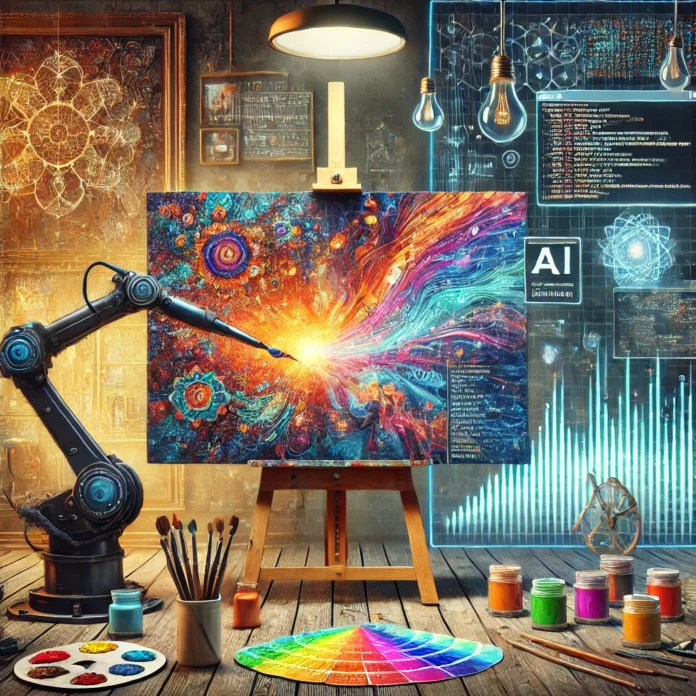The fine arts have long been considered a realm of human creativity, a space where emotions, imagination, and cultural expression converge. However, with the rise of Artificial Intelligence (AI), this dynamic is being reshaped. AI systems now create paintings, compose music, write poetry, and even choreograph dances, blurring the lines between creativity and computation. This technological shift raises profound questions: can machines truly be creative, or is AI-generated art merely the output of sophisticated algorithms?
How AI Is Transforming Fine Arts
AI’s role in the arts is multifaceted, enabling both the creation of original works and the enhancement of human creativity.
1. Visual Arts
AI tools like DALL·E, DeepArt, and Runway ML use deep learning algorithms to generate images based on text prompts or existing artworks. These systems analyze millions of art pieces to learn patterns, styles, and techniques, allowing them to produce new works in any desired aesthetic—from impressionism to surrealism.
For instance, an AI-generated artwork titled Edmond de Belamy was auctioned at Christie’s for $432,500, sparking debates about the value and authorship of AI art.
2. Music Composition
AI platforms such as Amper Music and AIVA (Artificial Intelligence Virtual Artist) compose original scores for films, games, and advertisements. By analyzing genres, rhythms, and melodies, these tools produce compositions that rival those of human musicians, often in a fraction of the time.
3. Literature and Poetry
Natural Language Processing (NLP) models like GPT-4 create poems, stories, and screenplays that mimic human writing. AI has been used to complete unfinished literary works and generate experimental poetry that challenges conventional structures.
4. Performance and Dance
AI choreographers, such as Google’s Project Magenta, design dance routines by analyzing movements and creating new sequences. These routines are often collaborative, inspiring dancers to explore novel interpretations of motion.
The Creativity Debate: Machine vs. Human
The central debate surrounding AI in fine arts is whether AI can truly be considered creative. Creativity is traditionally associated with human traits like imagination, emotion, and intent. AI lacks subjective experiences, so its “creativity” is often described as derivative—a recombination of existing data rather than the generation of original ideas.
Critics argue that AI art lacks the emotional depth and narrative context that make human art meaningful. While an AI painting might mimic Van Gogh’s style, it does not convey personal struggle or cultural commentary.
Proponents, however, suggest that creativity is not exclusive to humans. They argue that AI expands artistic possibilities by offering novel perspectives and tools, enabling artists to push boundaries. For instance, artists like Mario Klingemann and Refik Anadol use AI as a medium, blending human vision with machine-generated elements.
Ethical and Legal Challenges
AI in fine arts raises ethical and legal concerns, including questions about authorship and copyright. If an algorithm creates a piece, who owns the rights—the programmer, the user, or the AI itself? Additionally, AI systems trained on existing works without permission spark debates about intellectual property and artistic integrity.
Conclusion
AI’s role in fine arts challenges traditional notions of creativity, authorship, and value. While machines may not possess emotions or intent, they are undeniably reshaping the artistic landscape, offering both inspiration and disruption. As artists and audiences navigate this evolving frontier, the conversation about creativity and code will continue to redefine what art means in the age of AI.





